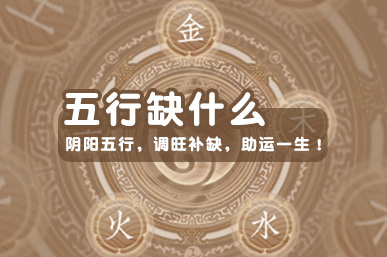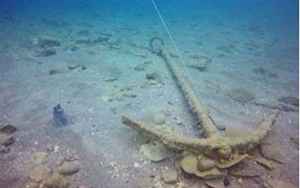anchors(anchor是什么意思)


Anchors refer to a crucial aspect of web-page design that allows users to jump directly to specific sections within a page. In other words, an anchor takes the user to a specific location within a page rather than forcing them to scroll through the entire content.。
The term "anchor" refers to an HTML tag that creates a link, allowing the user to jump to a specific section of a webpage. These links are usually placed on the same page, but they can also redirect to different pages on the same site or on external sites.。
One of the most significant benefits of anchors is that they make it easier for users to navigate through long and complex web pages. By having a table of contents or a list of sections with anchor links, users can quickly jump to the section they are interested in, without scrolling through tons of irrelevant content.。
Anchor links are usually placed within the content of the webpage. They can be inserted as a hyperlink to a specific section of the page, or they can be added as a clickable button or icon. The anchor links usually have a hashtag(#) followed by the ID of the section they are linking to, for example, #section2.。
To create an anchor link, you must first create the section you want to link to. Then identify the ID of the section and use it to create an anchor link. The ID can be anything, but it is usually a word or phrase that describes the section. For instance, if you have a section on "Benefits of Yoga," you could use "yoga-benefits" as the ID.。
Jump to Benefits of Yoga。
Benefits of Yoga
。In the example above, the anchor link will take the user to the section with the ID "yoga-benefits" on the same page.。
Another important aspect of anchors is their SEO (Search Engine Optimization) value. By using anchor links, you can make it easier for search engines to index your content. When search engines crawl your site, they follow links to each page and use them to determine the relevance and importance of your content. With anchor links, you can direct search engines to specific sections of your site, it easier for them to index and rank your content.。
In conclusion, anchors are a valuable tool in web design that can enhance user experience and improve SEO. They allow users to quickly and easily navigate through long pages, and they provide search engines with a clear structure of your site's content. Therefore, it is essential to consider using anchors when designing your web pages to ensure the best possible user experience and search engine optimization.。
我爱计算机视觉的博客
很高兴听到你喜欢计算机视觉的博客。在计算机视觉中,锚点是一个非常重要的概念,它用于识别图像中的物体和目标。锚点是一组预定义的框,用于在图像中识别目标。这些框都是以不同的比例和大小定义的,以便识别不同尺寸和比例的目标。锚点在深度学习中扮演着重要的角色,因为它们为神经网络提供了一个预定义的框架来检测和定位目标。因此,锚点是计算机视觉中一个非常重要且常用的概念。
细说目标检测中的Anchors
目标检测中的Anchors(锚点)是指一种预定义的、固定大小和比例的矩形框,用于在图像中定位目标物体的位置和大小。Anchors是目标检测算法中的一种基础组件,常见于基于深度学习的目标检测算法,如Faster R-CNN、YOLO、SSD等。在目标检测中,Anchors被用来作为卷积神经网络(CNN)的输出结果,作为基准框(Anchor boxes)与真实目标框进行匹配,从而计算目标的位置和大小。一般来说,Anchors是通过对训练数据进行分析得到的,目标检测模型会根据Anchors对不同大小和比例的目标进行检测。Anchors的数量、大小和比例都是需要进行调整的超参数。一般来说,Anchors的数量越多,检测精度也就越高,但模型计算量也会相应增加,因此需要在精度和计算量之间进行平衡。而Anchors的大小和比例也需要根据目标检测任务的特点进行调整,比如对于小目标检测,需要设置较小的Anchors。总之,Anchors作为目标检测中的重要组件,可以提高检测精度和效率,需要根据任务的特点进行合理的调整。
anchors是什么意思
Anchors一般指锚点,可以用于在页面内进行跳转。在网络营销中,anchors也可以指锚文本,即页面中用于链接其他页面或资源的文字或词组。在海洋中,anchors指锚,用于固定船只或其他浮动设备。
热门推荐
推荐阅读
热门标签
热门精选
- 06-28八字甲木壬水(甲木遇壬水会怎么样)
- 06-21八字现三辰(八字三个辰代表什么)
- 06-13武则八字(武则天八字缺什么五行)
- 06-13八字用丙癸(四柱八字如何确定喜用神)
- 07-25姓廖的名人(现代廖姓名人堂)
- 06-27快手二驴八字(快手二驴最新消息)
- 07-02姓牛(姓牛的名人有哪些呢)
- 07-30冷门的姓氏(冷门姓氏排名)
- 06-20情欲重的八字(如何从八字看你房事质量)
- 06-30姓东方的名人(东方姓历代名人有哪些)
宝宝起名最新文章



- 10-01anchors(anchor是什么意思)
- 10-01天平座男(天平座男人喜欢什么类型女人)
- 10-01火星在命宫(火星在命宫的男人)
- 10-011972年属什么(1972年属什么生肖 今年多大了)
- 10-011975属兔运势方位(1975年属兔财运方位在哪里)
- 10-01月亮白羊(星盘详解月亮落在白羊座代表什么)
- 10-01月明风清的意思(月明风清什么意思)
- 10-01梦见别人有钱(梦见别人有钱有什么预兆)
- 10-01125磅等于多少斤(125磅是多少斤)
- 10-01姓郑的历史名人(姓郑的历史名人有哪些?)






























